Grocery Delivery App Development: A Comprehensive Guide
- Updated: Nov 11, 2024
- 12 min
It looks like you’re interested in learning how to create a grocery delivery app. You’ve come to the right place.
This guide helps startup founders, product managers, and serial entrepreneurs understand all the details involved in custom grocery delivery app development.
You’ll discover:
- Why now is an ideal time in the market to launch a new grocery delivery app
- How much it costs to develop a grocery delivery app
- The step-by-step process for building a grocery delivery app
- A checklist for finding and selecting a technical partner
- And more!
If you prefer visuals over text, feel free to skip to the bonus infographic “How to Create a Grocery Delivery App.”
From concept to launch, here’s how to create a food delivery app for your startup.
Let’s get started!
Start your journey with our expert developers today to bring your app idea into reality - contact us today!
What Are Grocery Delivery Apps?
A grocery delivery application is an app that allows users to order their groceries online. The app owners are responsible for facilitating the grocery delivery to users’ homes according to their terms and conditions.
Most grocery apps are subscription-based, meaning that users have to pay monthly fees or annual fees in addition to the price of groceries on the platform.
As a startup, you have the option of creating different types of grocery delivery apps. The two most prominent applications are:
- Aggregators
- Marketplaces
Aggregators
Aggregators are apps that basically list nearby grocery stores to platform users. Aggregators usually include stores like Walmart and other major grocery chains. How do applications based on this model work?
- The platform user can then choose from the list of stores shown.
- Users can add their grocery choices in the cart on the app from the online menu.
- They check out the cart and make payments.
- Upon confirmation of the order, the user can track the order in real-time till they receive the items.
The responsibility to make the delivery solely lies with store owners or the app’s delivery team.
The intricate workings of such apps depend on the partnership between store owners and the startup.
Marketplaces
Marketplace grocery apps are somewhat similar to aggregators. However, they differ in their core mode of functioning.
This grocery app allows merchants nearby to display their groceries while customers contact them via the platform. It serves as a medium of contact between buyers and sellers.
For marketplaces, the startup must have a mechanism to facilitate communication between merchants and app users. 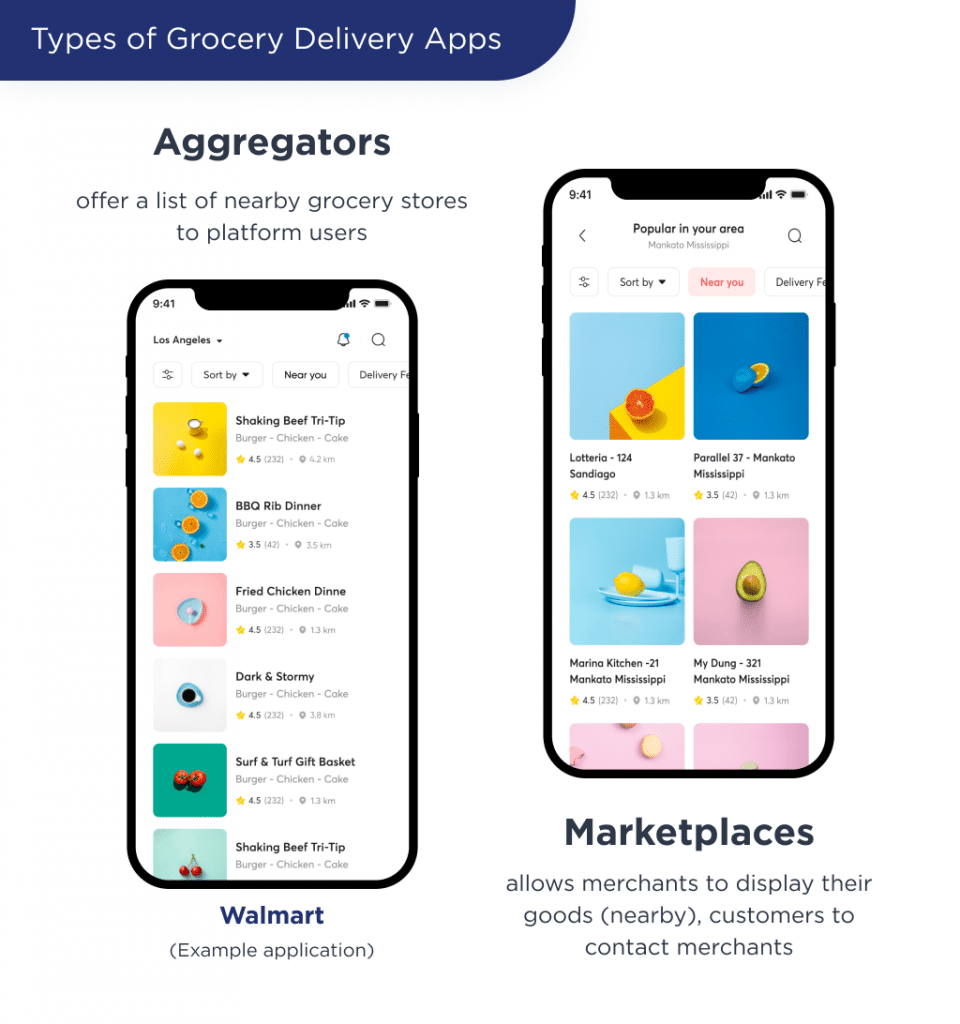
When’s the Best Time to Develop a Grocery Delivery App?
Thinking about the best time to create a grocery delivery app? Well, now is the best time to have one as an entrepreneurial endeavor.
According to data from AppTopia, owning a grocery delivery product is a very profitable move. And two major factors make now the best time to have a grocery delivery application.
The Pandemic
The Covid-19 pandemic created a surge in grocery app usage as it provides a safe way to shop without breaking social distancing rules.
Grocery delivery services now market the adherence to contactless delivery, a strong point in convincing most traditional brick-and-mortar shoppers.
Another reason your startup should have a grocery delivery app is the steady increase in demand for such apps.
Research by Elluminati Inc shows that 58% of customers prioritize convenience over anything else.
And a way to appeal to this 58% is by creating an easy-to-use application that makes them shop conveniently.
Successful Cases
Fridge No More is a new app that offers users a 15 mins delivery fee-free grocery delivery service. The company has a well-distributed number of delivery representatives to help meet consumers’ needs within the given time frame.
There are no minimum orders, so users can place orders for what they need irrespective of how small the item is. From one pint of ice cream to an entire grocery list for the month, Fridge No More can help.
The app optimizes on speed. Right now, they’re concentrating mainly on densely populated areas. Fridge No More is currently available in the app store of both Android and iOS devices.
Now, let’s find out more about the cost of a custom grocery app development. 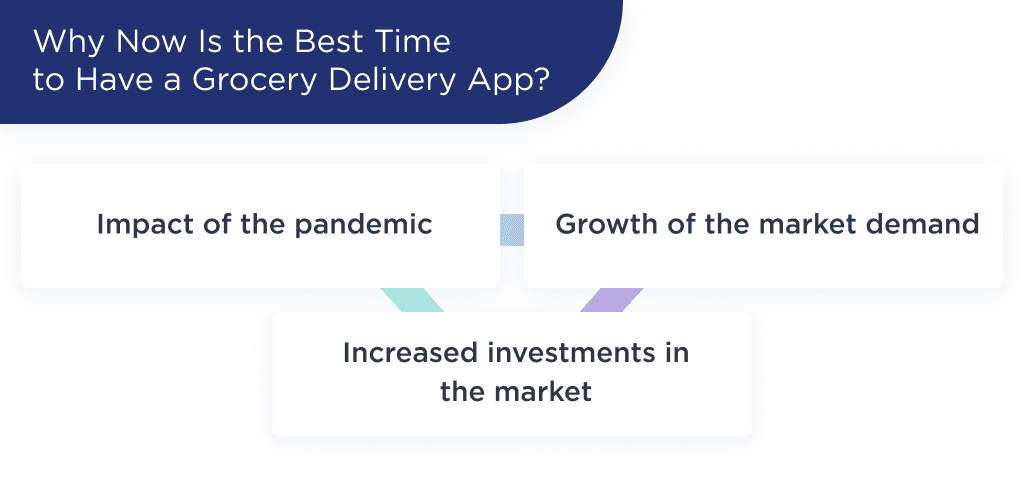
How Much Does it Cost to Build an On-Demand Delivery App?
The app development cost of an on-demand delivery product varies from $45,000 to $150,000.
The type and location of the team, as well as the type of the app itself, are the 3 major factors, that impact the development budget.
Let’s take a look at the details.
How Team Type Impacts Cost
There are several options for performers, among which you can choose the most suitable for the development of the application.
Let’s look at the table with the details.
| Type of team | Hourly rate | Cost of an MVP |
| In-house | $80 | $100,000 |
| Local agency | $175 | $225,000 |
| Freelancers | $20 | $25,500 |
| Outsource agency | $40 | $50,000 |
There is no definite answer as to which option you should choose. It all depends on your goals and the context of your tasks.
Separately, I would like to note that outsourcing agencies combine the quality of local agencies with the prices of freelancers. But a lot depends on the price.
So let’s see how geography determines the price of grocery delivery app development.
How Team Location Impacts Cost
Generally, apps created by developers in the USA cost more than those developed by Ukrainian developers.
Consequently, those developed by Indian companies are way cheaper than the other two countries mentioned above.
| Team location | Rate per hour | Cost of an MVP | Cost of an app |
| The USA | $150 | $150,000 | $200,000+ |
| Europe | $90 | $90,000 | $130,000+ |
| The UK | $100 | $100,000 | $150,000+ |
| Ukraine | $40 | $50,000 | $80,000+ |
| India | $25 | $30,000 | $45,000+ |
These are the best countries to outsource software development if you’re seeking top talent.
Now let’s learn more about the type of application.
Expertise gap? Let's bridge it together. Share your needs and elevate your team with our experts.
How App Type Impacts Cost
We’ve gathered 4 of the most popular apps that you can build your startup around.
To calculate the cost of developing something similar, we used the price of Ukrainian developers.
| Type | Examples | Cost of a similar app |
| Brand grocery delivery app | Walmart Grocery | $45,000 |
| Personal shoppers | Instacart, Amazon Fresh | $60,000 |
| Grocery delivery on-demand | Uber Eats, Dumpling | $70,000 |
| Subscription-based delivery | Hungryroot | $40,000 |
We hope that now you understand how many factors affect the price of development.
But how does the development process work? How many stages does an idea go through from creation to live application?
Let’s find out. 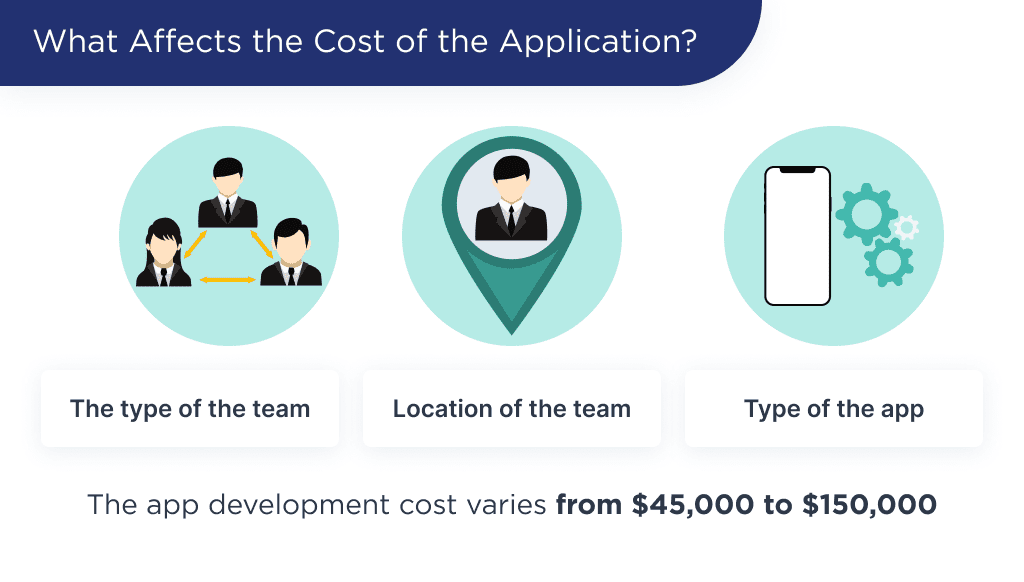
How to Build Your Grocery Delivery App
Creating a successful grocery delivery application embodies both technical & marketing processes.
To help you understand the workings of your grocery delivery application, let’s explain how an existing one works.
For example, Instacart. It allows users to shop from a preferred local grocery store online.
The app then sends a personal shopper to make required physical purchases and make delivery the same day.
Instacart does not own warehouses; instead, its shoppers make timely purchases that are restricted to only the major grocery stores within the vicinity.
Now that you know how the app functions, let’s take a dig into the intricacies of creating your grocery store application.
To build your grocery delivery app, you must take care of both the business side and the technical side of the app development.
Learn more on how to create a successful app. 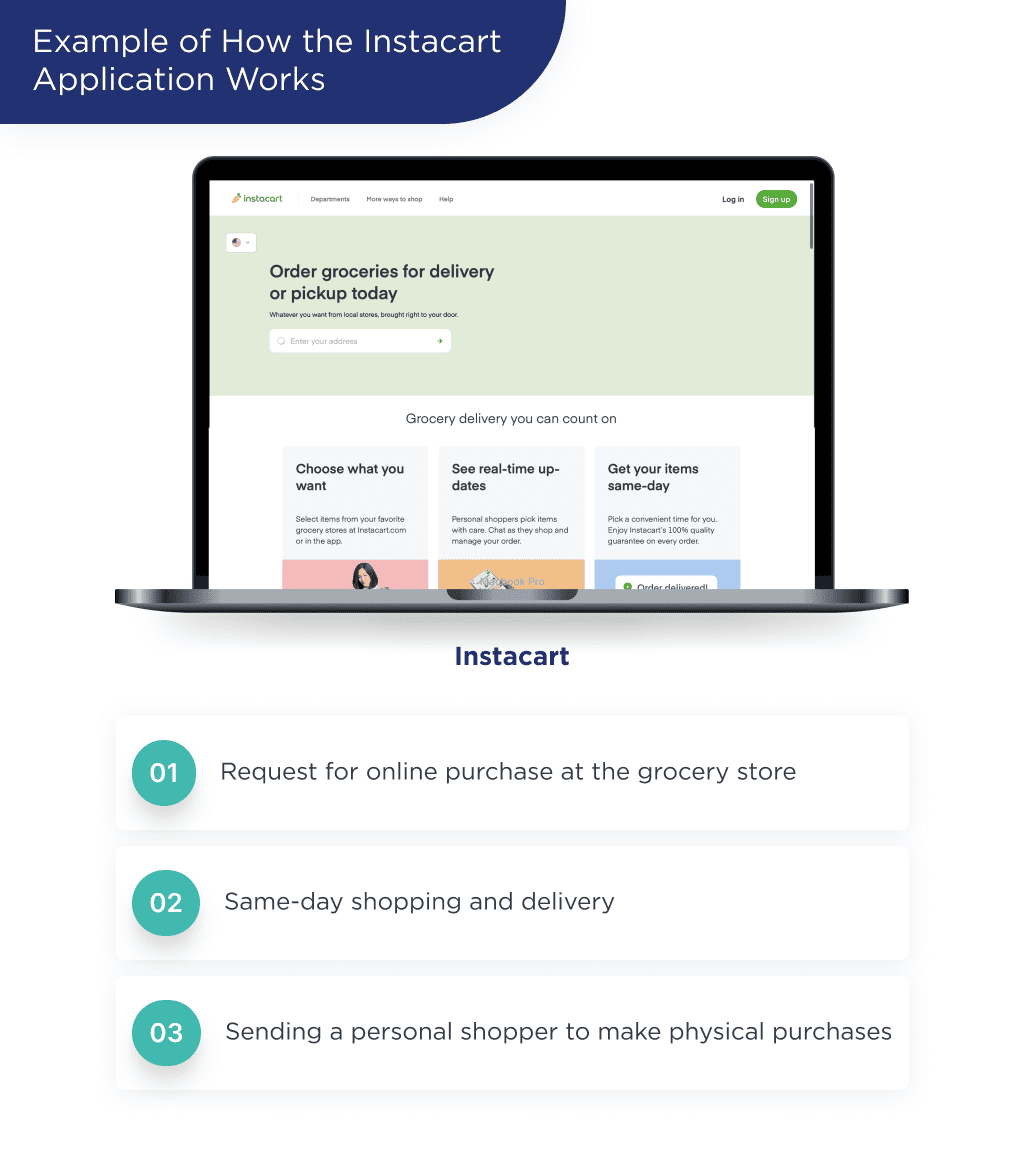
The Business Planning Phase
The business development phase is one of the most overlooked but fundamental processes of development.
The business development phase includes identifying the market potential and potential risks of investment into a new product. You should also clarify the scope and vision of the team and understand your target audience.
For a grocery app to be successful, there are two important business development terms to cater for. They are the marketing and the discovery phase.
The Technical Development Phase
With a projection of over $4.8 trillion in total retail e-commerce sales expected for 2021, it’s easy to presume that there are enough opportunities for all.
However, more than 80% of businesses in this niche fail within their first two years. Experts believe the leading cause of the high failure rate is competition in the e-commerce sector.
So, if you want to make headway should prioritize marketing. You should have a marketing budget that’s more than the app development budget 2-3 times.
Want to join the booming eCommerce market? Learn how to develop an eCommerce app that meets customer needs.
While your grocery store app might be top-notch, poor marketing can make your startup unprofitable. 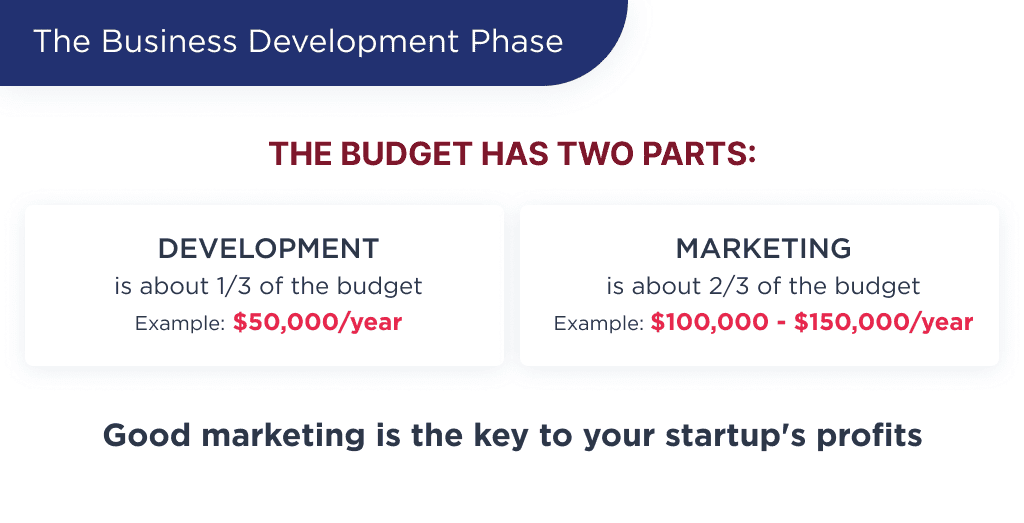
Discovery Phase
The product discovery phase is one that’s mainly made up of information gathering.
Here, the development team analyzes and gathers information to complete the application. The information gathered helps to check the feasibility, usability, and viability of the app.
For more information on this all-important step, read this detailed guide on project discovery phase to learn more.
Here’s a highlight of the steps involved in the discovery phase:
| Step | Description |
| Customer Research | Carry out customer research to know the needs and buying behavior of your target market. You can make your customer research process a part of your market research or your design research. However, it’s best to map out how you want your app to work before carrying out customer research. This will help you understand customers’ reactions. It’ll also help you identify the right customer segment to target. |
| Competitors’ research | This process involves identifying the products that are competing with you for the same target market. You should evaluate their weaknesses and strengths to understand how best to market your product to that target audience. |
| Project blueprint | The scope and specification simply involve creating a list of milestones, tasks, costs, functions, and deliverables. |
| UI/UX design | The User Experience design is vital in ensuring your target market gets the maximum benefit from the app. A great UX design can be crucial in outshining your competitors. Looking to improve your app’s design? Check out the best practices in our detailed app design process article. |
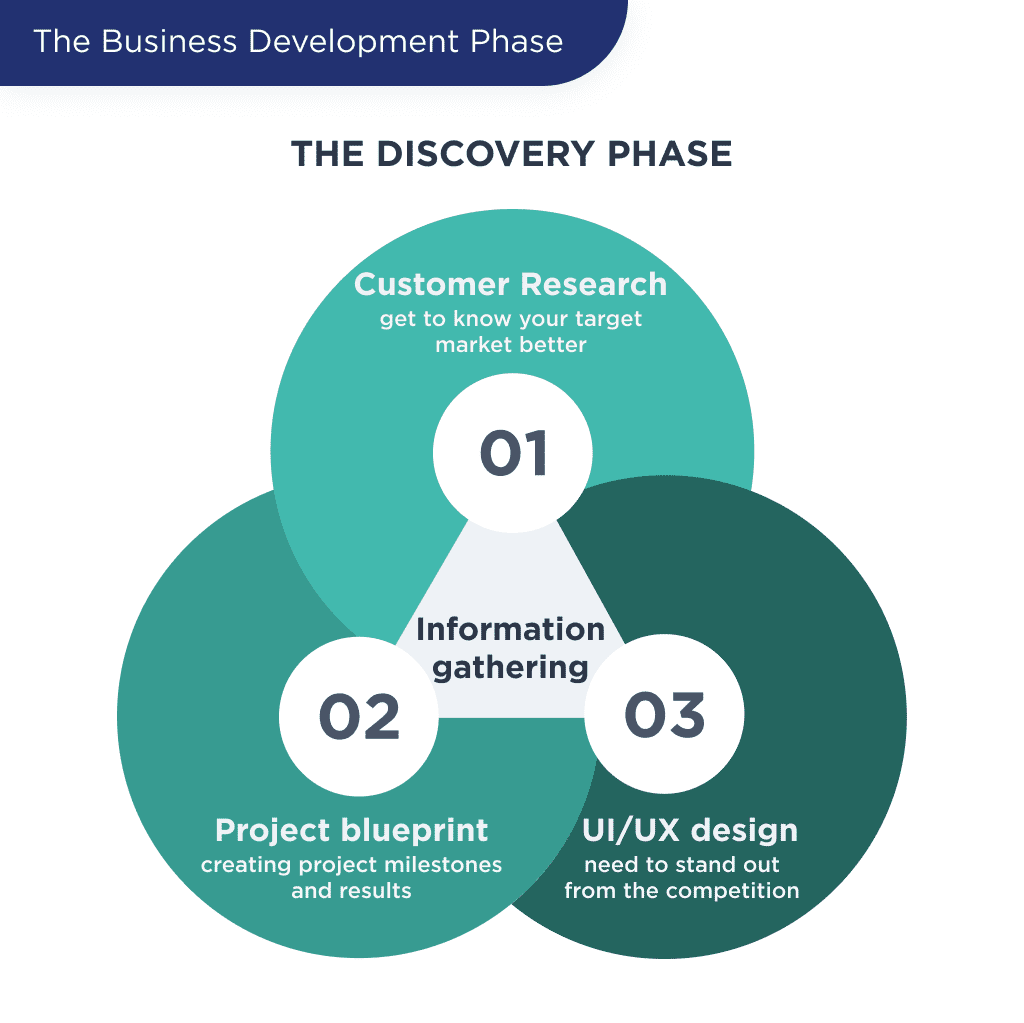
The Technical Development Phase
As a startup, the crux of the technical development phase involves seeking the right app development team.
The team should have a proven record of creating highly useful apps that give the best user experience possible.
Generally, the technical development phase for a grocery delivery app involves creating an MVP and scaled MVP with different sets of app features for a grocery shopping app.
Features of an MVP
The MVP is a stage when the central focus is on developing the core functionalities of the app.
For creating a grocery delivery MVP application, features have to be developed for the following:
- Admin panel
- Customer app
- Courier app
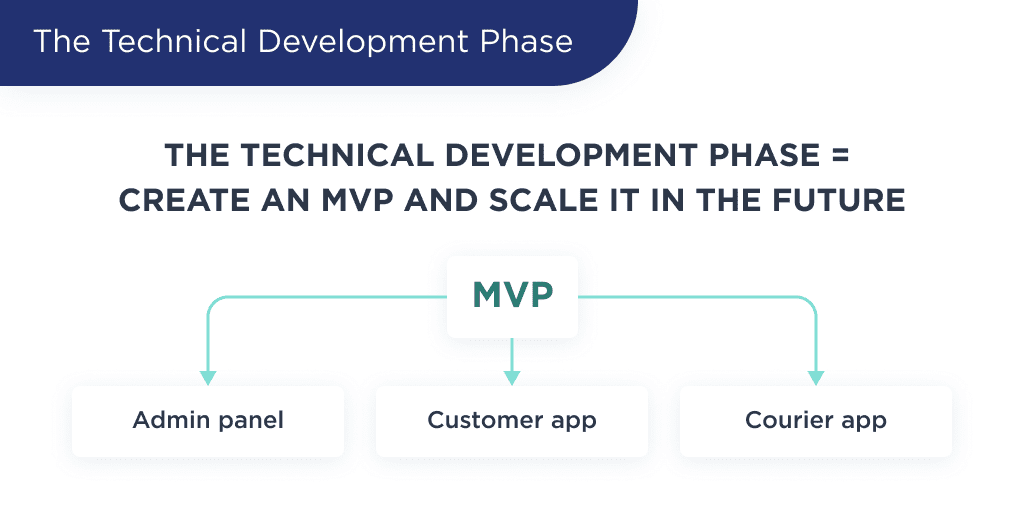
Let’s take a dig into the features you’ll need for each of the sides:
Features of Admin Panel
| Features | Description |
| Customer Data | Gathering customers’ data helps you coordinate goods delivery. The customers should provide the name and address where the goods should be delivered. Customer data is also the most critical piece of information for coordinating marketing strategies. |
| List of Stores | If you’re building an MVP for an aggregator app, you must have a list of stores in different neighborhoods. For this, your developer may simply get an API with a list of stores or manually integrate company names and locations. |
| Menus/Items in Stock | The app needs features that can help users to know the groceries in stock. Irrespective of the type of grocery delivery app, this feature is a must-have. |
| Revenue | This is a feature that helps you keep track of money earned through the platform. |
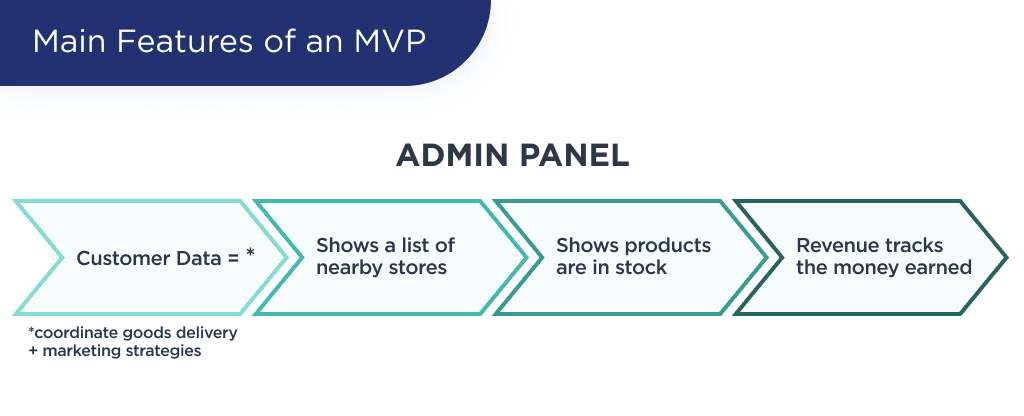
Features of Customer App
Here are some features that are useful to customers which you should add when creating an MVP for your grocery.
| Features | Description |
| Registration | Customers that use your app need to register. Ensuring this guarantees that you have some vital details to keep track of their purchases. The feature also helps to ensure proper delivery, customer feedback, and marketing. |
| Profile Management | This feature helps consumers to enter preference information and modify it when they deem fit. Some development teams embed features to track consumers’ neighborhoods here. |
| Search on Map/ in List | This feature helps consumers to streamline their choices to grocery stores within their neighborhood. Search-in-list helps consumers navigate through the list of products on the platform. |
| Order placement | Order placement is the crux of the entire order management system of the app. Order placement is where consumers finally make their order. |
| Payment Processing | This feature embeds the entire process of payment initiation, payment verification, and payment confirmation. The payment gateway helps to facilitate this and provides different payment methods. |
| Receipts | The receipt is proof of payment that the consumer has made a purchase. |
| Rates and Reviews | Rates and reviews help your startup to sieve through the bad and good delivery agents. It’s a feature that helps users rate and review goods purchased, the stores/merchants, and delivery agents. |
| Push Notifications | This feature helps draw the attention of users to information on the application. |
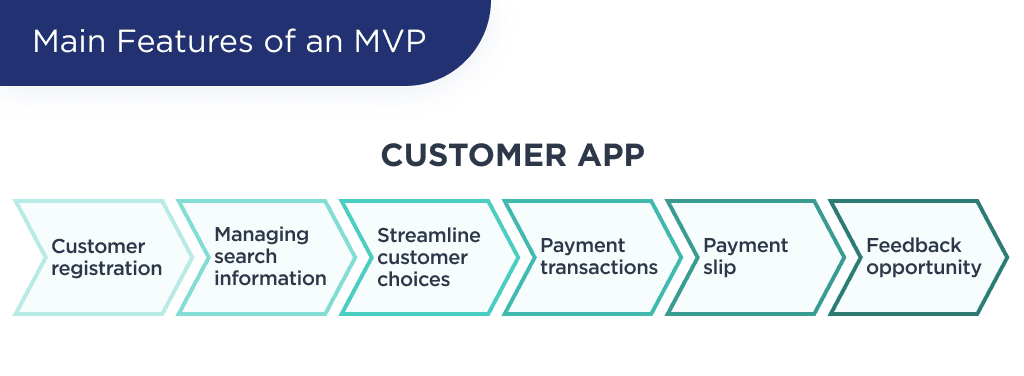
Features of Courier App
These are the essential features needed for couriers. This feature remains whether you’re using a free delivery or paid delivery option.
| Features | Description |
| Registration | The courier team also needs to register. This helps you keep track of the delivery team you have on board. It can also help monitor their delivery time. |
| Profile Management | Profile management is a feature that helps you to have up-to-date information on the delivery team. Every delivery person is tasked to fill the profile’s content as a safety feature for consumers and the startup. Profile details may also be used for real-time tracking by the mobile app development team |
| Order Management | Order management is the collection of the actions and processes involved in completing an online grocery shopping process. |
| Status Update | The status update feature gives your delivery agent information on order status. |
| Navigation | The navigation feature on the grocery food delivery app helps to direct courier agents. It guides them to the location where they should deliver the order. Quite often, mobile application developers integrate google maps in the backend of the application of the grocery delivery business. Route planning software can be used here to plan and optimize routes to hit the maximum number of stops with the minimum mileage |
| Delivery History | A delivery history helps courier agents to identify any shopping list they’ve completed. |
| Earnings | This feature gives real-time tracking of money earned on the platform. |
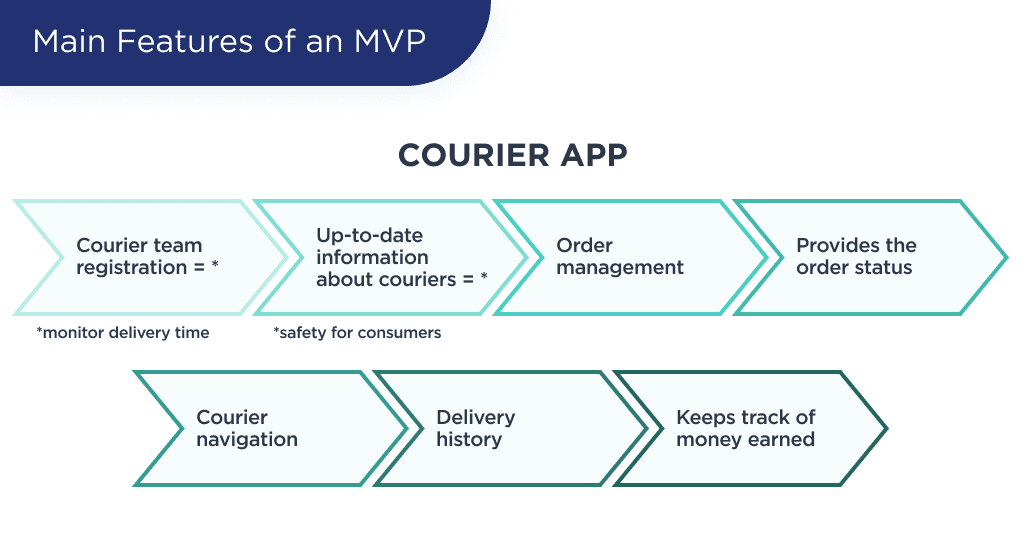
Features of Scaled MVP
The features you need to scale an MVP can be split into the same roles, as for an MVP. Yet, in this part we’ll focus on the customer application.
The customer-centric features we’ll mention here will help to give users a top-notch user experience.
| Features | Description |
| Bookmarks | Bookmark is a feature that’s used to save a page or grocery product for future reference. The user bookmarks the product/page intending to return to it in the future. |
| Order history | Order history helps the customer to keep track of checkouts. The customer can visit the order history to repurchase some groceries. |
| Loyalty Programs | Loyalty programs are programs that are designed to bring customers back. They reward people that consistently use your platform. It is often extended to individuals that purchase a certain number of grocery items on the online grocery app and may impact the pricing plan for such an audience. |
| Social Networks Integration | Social network integration is the integration of social media networks in a grocery mobile app. It’s a common feature among applications that have a presence in the grocery market. |
| Delivery Time Estimation | This feature helps the customer to estimate when their order will be delivered. |
Tech Stack For Developing A Grocery Delivery Platform
The tech stacks used in a typical grocery delivery platform can be pretty diverse. The tech stack selected should be responsive and reliable.
In our opinion, an ideal example of a suitable tech stack includes:
- Backend: Node.JS
- Admin panel: Node.JS JavaScript, HTML5, CSS.
- Mobile development: React Native or Java for Android app and Swift for iOS app. If you decide to build an iOS app, this guide on the best iOS app development tools covers everything from prototyping to testing.
- Databases: MongoDB or MySQL
- Payment gateway: Braintree, PayPal, Stripe, or other payment options
- Geolocation: Google Maps API
- Utilities: Twilio, Firebase, Google SDK, and Facebook SDK
- Server: AWS (compare Digital Ocean, AWS, and Google Cloud for insights into which platform fits your business best).
Crafting Custom Mobile Apps That Delight Users!
Discover the cost to hire a React.js developer and learn what you can expect for your investment.
Required Team
You need a team of 8 professionals to help with your product. They are:
- Project manager
- Business analyst
- UX/UI designer
- CTO
- Mobile developer
- Backend developer
- Quality assurance tester
- DevOps (Check out our DevOps services to learn more about our DevOps practices and tools.)
How to Choose a Team to Develop an App Like Instacart
Choosing the right team is very important to the success of your product. When selecting your team of app developers, here are the things you should watch out for:
- Similar experience. Watch out for the total number of successful grocery delivery applications built.
- Level of expertise. Check the experience of an app development company, working with similar applications, tech stacks, or solving complex technical issues.
- Project portfolio. Navigate through their portfolio of apps to verify their ability to deliver on your project.
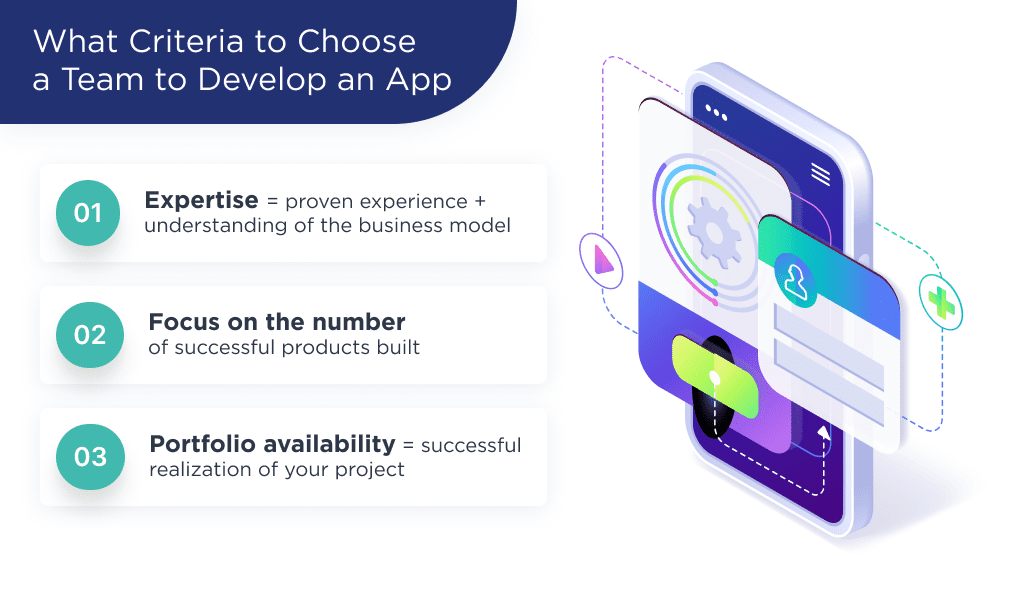
What’s Next?
Building a winning grocery delivery platform takes more than just coding a slick app. You need to craft an airtight business model to help your startup thrive.
The best approach? – Partnering with a full-stack app development team that can handle both the technical build and strategic business lift.
At SpdLoad, we’re armed with the latest tech stacks and hard-won expertise to help develop a top-notch grocery delivery app.
Schedule a free consultation to map out how we can take your grocery delivery dreams from idea to reality.
Successful apps are often the result of strong partnerships. Learn how to build one in our article on app development partnerships.
Bonus Infographic
Here you’ll find a summary of our in-depth guide. Learn the basics to help you make a grocery delivery app.
IT outsourcing can streamline your app development. Here’s a complete guide on finding the right mobile app developers. 












